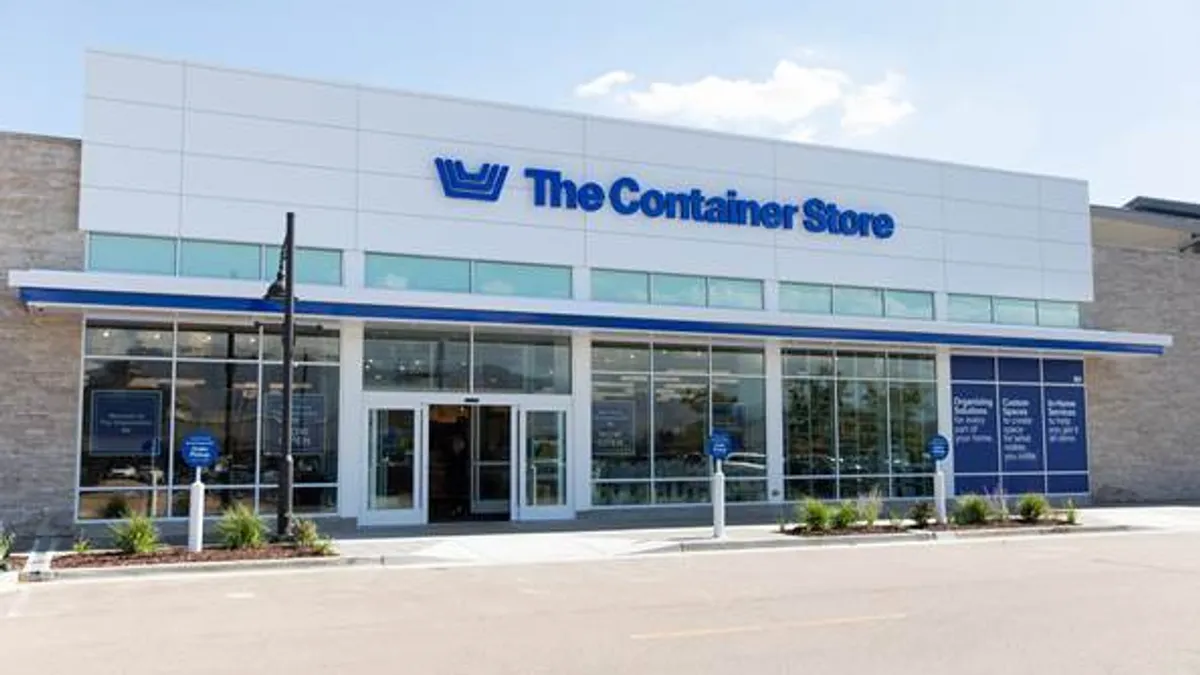To decarbonize the world, the world must decarbonize the supply chain, and quickly.
Some 75% of all greenhouse gas emissions fall under Scope 3 emissions, which includes the upstream supply chain as well as the end use of a company’s goods and services.
To cut those emissions enough to avoid catastrophic climate change will take technology, infrastructure, operational changes — and money.
The total cost of transitioning the global economy to net zero emissions could cost an extra $3.5 trillion a year in capital spending, or roughly half the profits of the world's global corporations, according to a 2022 McKinsey estimate.
As more businesses look to reduce the carbon footprint of their supply chains, the question of who will pay for the necessary changes — buyers or suppliers — will become more pressing. Even the world's wealthiest brands are discovering the true cost of decarbonizing their supply chains.
“The amount of internal investment being put into decarbonization activities varies enormously between organizations,” said Simon Geale, EVP of procurement at the consultancy Proxima. “It's not just suppliers that are struggling with ‘How do I pay for this?’ It’s organizations.”
And while some major brands are investing to help suppliers lower their emissions, some may simply be dumping the issue and its costs onto their supplier base for them to figure out on their own.
In some industries, such as fashion, those suppliers are already struggling with tight operating margins. “How are they going to invest when there's no cash flow? Cash flow is the problem,” said Chana Rosenthal, principal of reDesign Consulting. “That makes it challenging to invest in green [technologies].”
‘The biggest hill’ in climate action
At many companies, cost-control — not carbon reduction — remains the top priority.
In an Efficio study this year, only a third of surveyed executives and managers said they were “very confident” in their ability to hit their carbon reduction goals. The study shows cost control remained a top responsibility for procurement leaders over others, including sustainability.
Even within environmental reduction investments, cost reduction is the top driver, according to a GEP survey of executives this year.
“Behind closed doors, a lot of CFOs are saying, ‘Well, I know that I'm going to have to do it. But when do I have to do it?’” Geale said, referring to action on supply chain emissions. “Because there's an immediate cost rather than an immediate payback.”
Unfortunately for humanity and the rest of Earthly life, the climate is indifferent to budget plans and profit targets. The world needs to cut greenhouse gas emissions by 43% by 2030 to avoid some of the most extreme outcomes of climate change, according to the United Nations’ Intergovernmental Panel on Climate Change.
“Behind closed doors, a lot of CFOs are saying, ‘Well, I know that I’m going have to do it. But when do I have to do it?’ Because there’s an immediate cost rather than an immediate payback.”

Simon Geale
EVP for procurement, Proxima
Scope 3 emissions, specifically those tied to the supply chain, present an especially steep challenge and cost burden. Simply understanding the extent of a footprint takes time, data and often technology. All of that takes money. Because these emissions occur outside the company's purview, they are the most expensive to track, while also often being by far the biggest chunk of most carbon footprints.
“The biggest hill is Scope 3,” Jackie Sturm, Intel VP for global supply chain operations, told sister publication Supply Chain Dive in an interview earlier this summer. “If you look at Scopes 1 and 2, we have converted to renewables — well before this was popular.” In 2022, Intel’s U.S. and European operations ran on 100% renewable energy, and the company aims to operate on 100% renewables across global operations by 2030, according to its corporate responsibility report.
“But to bring that back to our supply chain is challenging because, as a semiconductor company, we use almost everything on the periodic chart.”
For Intel, that means its climate footprint size is tied to the mining of a range of minerals, each of which comes with its own emissions creation. Mitigating that footprint takes an enormous toolbox, including data collection, choice of more sustainable materials and working with suppliers, to find out how much of their carbon footprint is intrinsic to their production and what they are doing to mitigate it.
Some carbon-reduction efforts could pay for themselves in the long run through operational changes that produce value by increasing efficiency or cutting down on energy costs, Sturm said. “How do I maybe reduce consumption? How do I shift my consumption to greener chemicals? How do I bring things in more regionally rather than transport them across the ocean?”
For suppliers that can afford it, they may have their own incentives to invest in emissions reduction, particularly in consumer goods sectors where more customers want sustainable products.
“What we found generally is, at least in our industry, it's really moving towards suppliers seeing climate as a competitive advantage, and really investing in their own value chains,” Nancy Mahon, chief sustainability officer for The Estée Lauder Companies, said during an Economist Impact conference panel in Washington, D.C., earlier this year.
But many suppliers may not have the resources to make investments without help.
How to get a CFO interested in cutting Scope 3
Finance may be able to help bridge at least some of the gap between global environmental imperatives and corporate financial goals, and between buyers and suppliers when it comes to cutting emissions.
For CFOs, “one of the things that really perks their ears up is the idea that they can get access to better financing rates by performing better on green initiatives, which I think is super interesting,” Geale said.
The market for green capital has expanded rapidly in recent years. One area where investors can put their money to work funding the climate transition is through so-called green bonds and other lending instruments.
These can help finance environmentally-focused projects. Apple, for example, announced $4.7 billion in green bonds last year to “jump-start the development of new low-carbon manufacturing and recycling technologies,” including carbon-free aluminum for its products, as the computing giant aims for a carbon-neutral supply chain by 2030.
Walmart, the world’s largest retailer, announced an “inaugural” $2 billion in green bonds in 2021, with some of the proceeds going to waste-reduction and sustainable transport initiatives in its supply chain. So far, projects include a program working with tire supplier Apache Mills to turn used tire materials into heavy-duty commercial entrance mats sold at the company’s Sam’s Club stores.
Walmart is also trying to help its vendors decarbonize through a supply chain finance program tied to environmental goals. Introduced in late 2021 as an “industry first,” the program — offered through HSBC — gives suppliers better financing terms if they meet science-based greenhouse gas reduction targets tied to the retail giant’s Project Gigaton, which aims to cut 1 billion metric tons of emissions from its supply chain by 2030.
In effect, big retailers like Walmart can use their solid credit ratings to get cheaper finance and faster payments for their suppliers, and use that as a carrot to incentivize lower emissions.
“When we propose one of these programs to a CFO, they're like, ‘Sure, this is great if we get more capital,’” said Eric Fisch, head of retail and apparel for HSBC’s U.S. commercial banking business. “And then we propose it to their chief sustainability officer, and they're like, ‘This is amazing. I want to do this.’”
The programs also can include capital for some supplier projects to help them with environmental and carbon-reduction initiatives.
How supplier projects are chosen is still being fine tuned, and Fisch noted there is a limit to the number of projects such a program can fund. “If you did it for every vendor, all of a sudden you'd be out a lot of money,” he said.
Outsourcing sustainability to suppliers
Whatever the usefulness and limits of such financing programs, they are far from ubiquitous.
For many suppliers, especially in low-margin industries like apparel, buyers’ Scope 3 targets are just another challenging demand and expense leveled by the powerful brands they depend on as buyers.
“More and more, you’re putting all of the pressure on suppliers,” Rosenthal said, pointing to the history of outsourcing manufacturing and other functions to suppliers outside of big consumer-facing brands. Sustainability, in that model, can be outsourced too.
"More and more, you’re putting all of the pressure on suppliers."

Chana Rosenthal
Principal, reDesign Consulting
Some garment manufacturers have reported this as happening. In a study that Rosenthal co-authored with Natasja Sheriff Wells for the NYU Stern Center for Business and Human Rights, some manufacturers in Bangladesh reported “expensive new environmental mandates to reduce water use and carbon emissions,” that added to their economic pressures. Brands, the report noted, generally declined to incentivize those mandates with financial benefits.
Yet suppliers may well be interested in reducing their footprints. “We talked to many suppliers around renewable energy, and they're all interested — they want to, at least the ones we spoke to — but that's not an easy solution,” Rosenthal said. “It takes time and money.”
Complicating matters is that buyers’ requirements around the environment keep changing and often vary from buyer to buyer. “What some suppliers are having trouble with is, they have invested in something and then something else comes along, and then they have to reinvest,” Rosenthal said.
Across industries, there are a range of approaches, some more conducive to working with more financially strapped suppliers than others.
“I've seen companies go to their supplier base and say, ‘Here's my target, comply or die. If you're not able to reduce your emissions in line with my target, I'm gonna kick you out,’” Proxima’s Geale said. “Which is a particularly draconian and ineffective way of running a decarbonization program.”
Geale went on to note, “I've also seen examples of where organizations are saying, ‘Let's have a more structured supplier engagement approach. Let’s figure out where you are, how we can help you, can we unlock financing solutions for you and be more collaborative.’” HSBC’s Fisch said he expects that the costs of the carbon transition will ultimately be split in some way among suppliers, buyers and consumers. He pointed to the recent period of historic inflation sparked by 2021’s supply chain snarls, which came with “a collective sharing of the pain" of cost inflation.
“Some of it got absorbed by the factory, and then some by the wholesaler, then some by the retailer, and then the price increased to some degree,” Fisch said of inflation. “It ends up becoming a collective burden. And that's the way I would envision any transition,” related to climate initiatives.
One simple way to help finance the transition for suppliers may be through generally good buying practices like paying on time and committing to purchases, according to Rosenthal.
“If you truly want to decarbonize, you have to start there and allow them the ability to mend their business,” Rosenthal said. “Talk to them and figure out what their needs are.”























